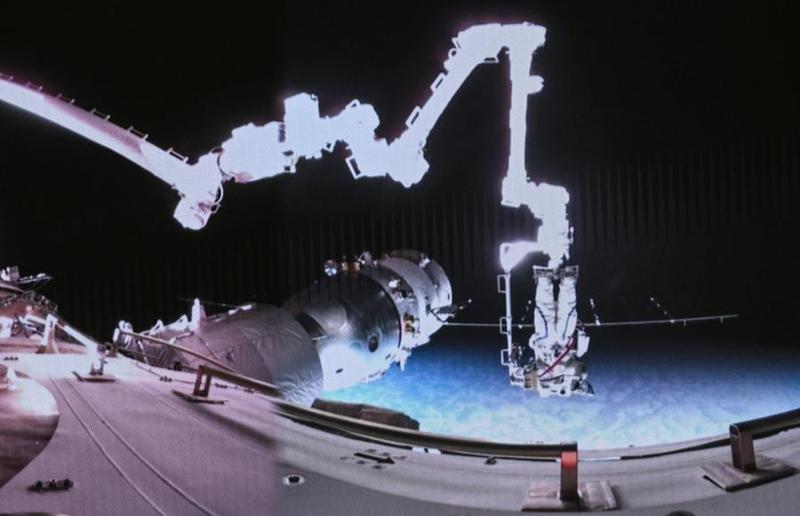 This screen image captured at Beijing Aerospace Control Center on March 2, 2024 shows Shenzhou-17 taikonaut Jiang Xinlin performing extravehicular activities assisted by the robotic arm of the space station. (PHOTO / XINHUA)
This screen image captured at Beijing Aerospace Control Center on March 2, 2024 shows Shenzhou-17 taikonaut Jiang Xinlin performing extravehicular activities assisted by the robotic arm of the space station. (PHOTO / XINHUA)
BEIJING - China has completed the material extravehicular exposure tests on its space station, with the experimental equipment and the first batch of material samples safely retrieved to the orbiting spacecraft, the National Space Science Center of the Chinese Academy of Sciences said on Friday.
The experimental equipment and samples were transferred from the exterior of the space station to the station's airlock module at 9:00 pm on Thursday, with the collaboration of scientists on Earth and assistance from an onboard robotic arm.
READ MORE: China ramps up space ambitions with record launch schedule
The orbiting taikonaut crew subsequently moved the experimental assembly to the lab module, where they disassembled and stored the samples. These samples will be returned to Earth onboard the Shenzhou spacecraft and handed over to scientists for further research, the center noted.
READ MORE: China unveils names for two space vehicles
The material extravehicular exposure experimental equipment was launched on March 8, 2023 and has been in orbit for one year. The first batch of over 400 material samples installed were divided into non-metallic and metallic materials.
READ MORE: Chinese lunar lander, new crew spaceship names revealed
According to the center, the orbiting taikonauts will install a new batch of samples into the experimental equipment in May 2024 and conduct a new round of space exposure tests.


